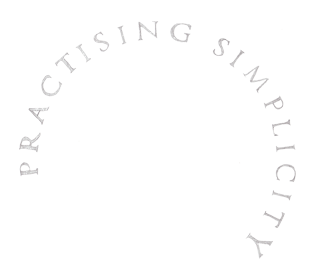seasonal flowers are #grownnotflown
 A few months ago I brightened up my wintry home with a pink peony that took pride of place on my dining table. Little did I know that it had travelled halfway ’round the world and, along the way, had been sprayed with chemicals to keep it fresh and perky.
A few months ago I brightened up my wintry home with a pink peony that took pride of place on my dining table. Little did I know that it had travelled halfway ’round the world and, along the way, had been sprayed with chemicals to keep it fresh and perky.
Buying seasonal, local and organic food is an absolute priority for me but when it comes to buying flowers, I just pick the prettiest (and, quite often, the cheapest). So when long-time PS reader, Sophie, politely informed me about the aforementioned peony, I decided to dig a little deeper.
Sophie is the Creative Director and Head Farmer at Little Triffid Flowers in Wagga Wagga, country NSW. Passionate about local, seasonal blooms, most of her flowers are grown in her micro flower farm – the first of its kind in the region.
 “I’ve always loved to garden and have flowers in my home. When we moved to a country town and finally had happy, fertile soil and space to grow, my hobby slowly evolved into a business.
“I’ve always loved to garden and have flowers in my home. When we moved to a country town and finally had happy, fertile soil and space to grow, my hobby slowly evolved into a business.
“Being in the garden is incredibly calming for me. It’s an organised yet organic process that lets you make steady, incremental progress that slowly rewards you with breathtaking beauty.”
It’s this beauty that tends to cloud my vision; I see exquisite flora and fail to think about its origins. Apparently I’m not alone.
“People don’t tend to think about seasonal flowers because, generally, flowers are a special treat and not one we ingest! Our lives are so fast paced, that stopping to think about what actually goes in to growing a flower (and then growing another thousand all exactly the same!) just isn’t on our radar,” says Sophie.
So what exactly does happen to flowers that are flown, not locally grown?
- They’ve been grown in a climate-controlled environment which takes masses of power to heat, cool and light. Which means flowers are creating carbon. And that’s crazy.
- They’ve been grown somewhere a long way away. This may mean they’ve come from North Queensland but it could also mean they’ve been imported from Holland (the largest flower exporter in the world), Africa or South America. Not only have these flowers been flown half way around the world, worker’s wages and conditions are often poor and the chemicals used are not regulated to the same standards that we have in Australia. Think about what we do with flowers when we receive them? We sniff them! And we’re breathing those chemicals in!
 Thankfully, the appeal of locally slow-grown flowers is catching on, hence #grownnotflown is gaining a following.
Thankfully, the appeal of locally slow-grown flowers is catching on, hence #grownnotflown is gaining a following.
Now that it’s spring, we have an abundance of choice when it comes to flowers for the home.
It’s the peak time for bulbs – think anemones, daffodils, hyacinths, iris, ranunculus and tulips.
Sophie’s spring staples include sweet peas, delphinium, queen anne’s lace, aquilegia, scabiosa, cornflower, nigella, stock, foxgloves, peonies and roses.
And if you have a penchant for natives, spring is heralded by wattle and we’re starting to see blushing bride, flannel flowers and kangaroo paw starting to bloom, too.
This post will be particularly useful to those of you who adhere to Margaret Olley’s spring cleaning style:
“If the house looks dirty, buy another bunch of flowers, is my advice.”
-
[…] Have you been following the #Grownnotflown movement? Read about it here […]
Leave a Comment




Thank you for bringing this to my attention. I guess I have never really considered where shop flowers are grown…I never would have guessed they could be imported internationally. This makes me more certain I wish to have a flower garden 🙂